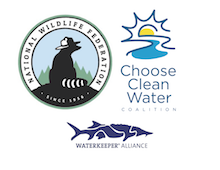Comment on an Underground Mine Safety Research Facility in Mace, WV
Background
The Center for Disease Control and Prevention (CDC) is looking for a suitable location to replace their National Occupational Health and Safety (NIOSH) Underground Mine Safety Research Facility, which would support research programs focused on miner health and safety issues. The site being considered for acquisition and development includes 461.35 acres located off U.S. Route 219 in Randolph and Pocahontas Counties near Mace, West Virginia. Click here for more information
The following issues at this location raise concerns for our water resources:
- Cave Features: The DEIS analysis of impacts on caves is flawed. It states that no caves features were identified during site reconnaissance; however, extensive cave features exist on the property. WV Speleological Survey submitted comments identifying 3 caves that could potentially cause problems, including Marshall Cave – a very serious water cave approximately a mile long. All cave features on the property must be mapped and overlaid with the proposed mine profile to analyze the impacts of construction of the mine on the cave features.
- Presence of Sinkholes: The site selection criteria states that the location cannot contain sinkholes; however, the property is located within karst terrain and cave features are present on the property. There is a high potential for sinkholes to be present, which would disqualify the site as a suitable location. Detailed terrain mapping must be performed using LiDAR or ground penetrating radar to determine the presence or absence of sinkholes.
- Groundwater: Subterranean streams are present on the property. Construction of the underground research facility could intersect with an underground stream which will negatively impact the groundwater. The extent of the subterranean stream network must be mapped, including depth and flow direction to avoid construction impacts on groundwater quality and quantity.
- Residential drinking water sources: The DEIS states that limited information is available about springs and wells used for potable water sources near the project area; however, most residences in the area use springs and wells for their drinking water supplies. Detailed information is needed to determine whether construction and operational activities will impact residential drinking water sources.
- Contaminants: Spills of hydraulic fluid, oil, or other contaminants from drilling or excavation equipment could be introduced into the environment. Contaminant migration into the groundwater is especially susceptible in the karst terrain. Enhanced spill prevention and response measures must be identified.
- Tygart Valley River: The DEIS does not adequately address the potential impacts to the Tygart Valley River. The Tygart Valley River is a designated trout stream and has strict water quality standards. The site would be located on highly erodible soils. Enhanced best management practices must be identified to control erosion during and after construction to comply with the water quality standards for trout waters.
- Entire site not surveyed: Only 44 acres of the 460-acre site were surveyed. The entire site must be surveyed to identify caves, sinkholes, springs, seeps, wetlands and streams.
Submit comments by April 5:
1. Electronically via www.regulations.gov. Search Docket No. CDC-2018-0057 and click “comment now”. Enter text into the comment box or click “choose file(s)” to upload.
2. Mail: Sam Tarr, Office of Safety, Security, & Asset Management (OSSAM), Centers for Disease Control & Prevention, 1600 Clifton Road NE, MS-K80, Atlanta, Georgia 30329-4027.




